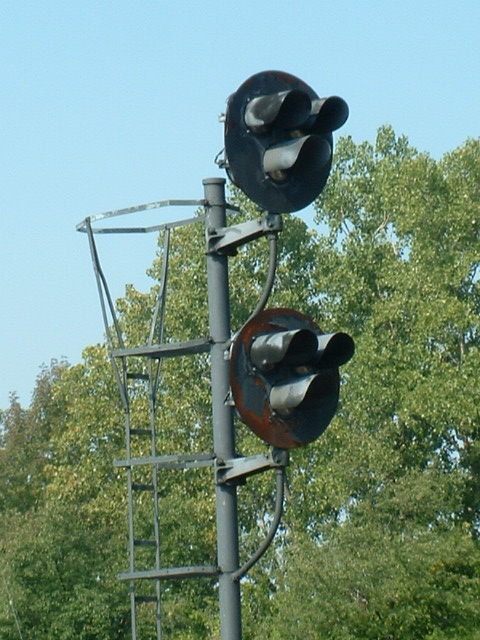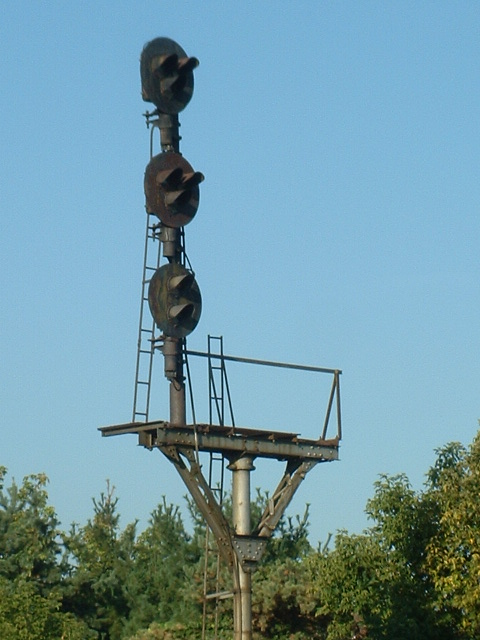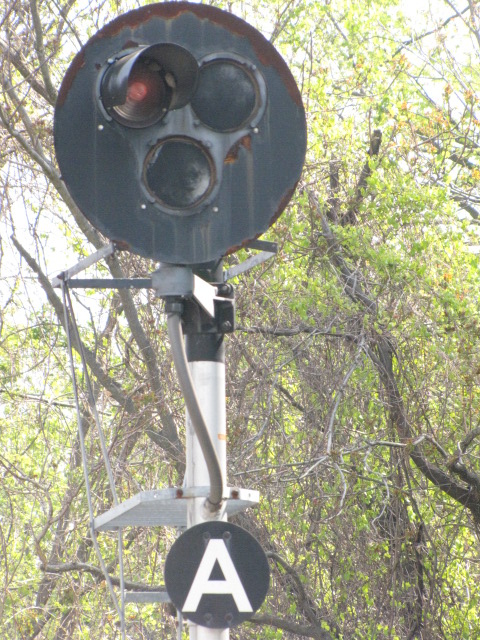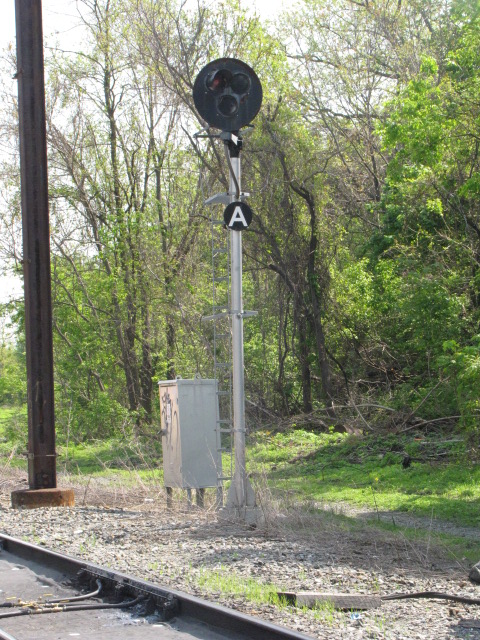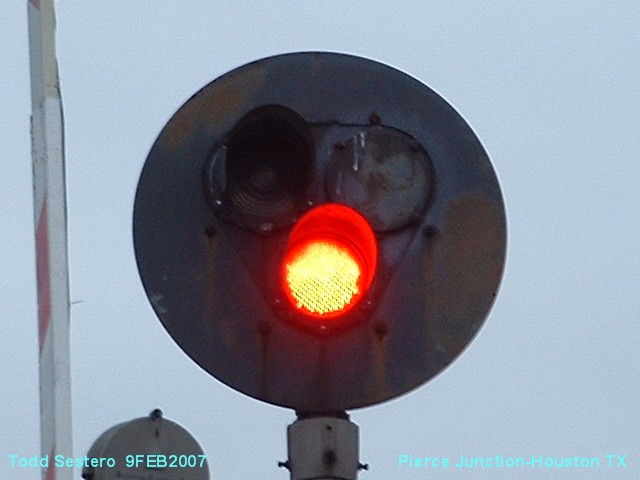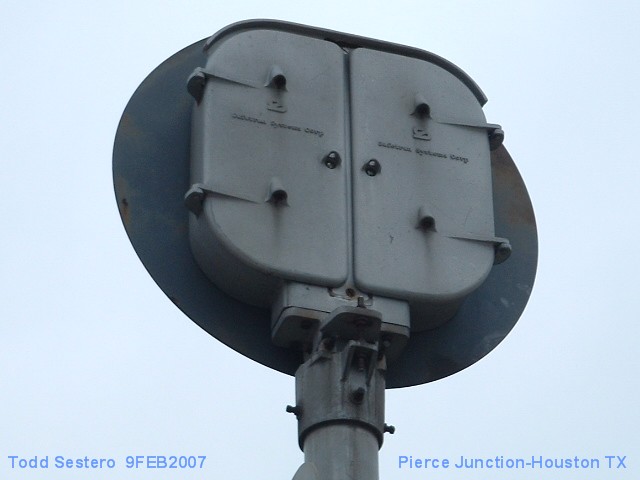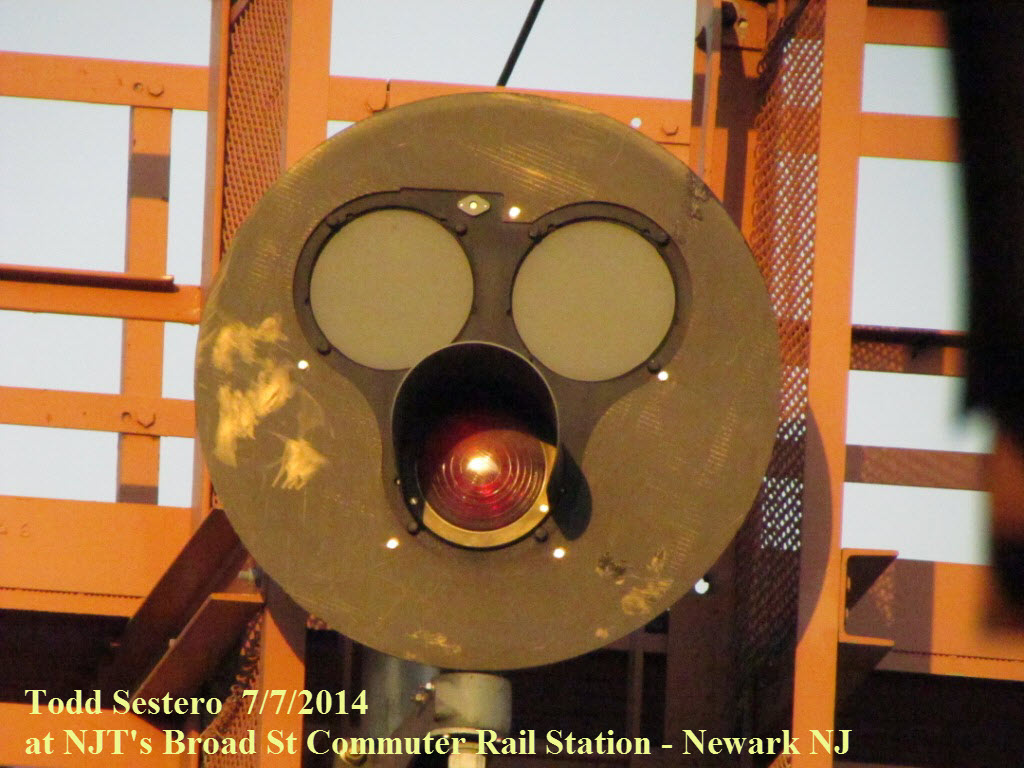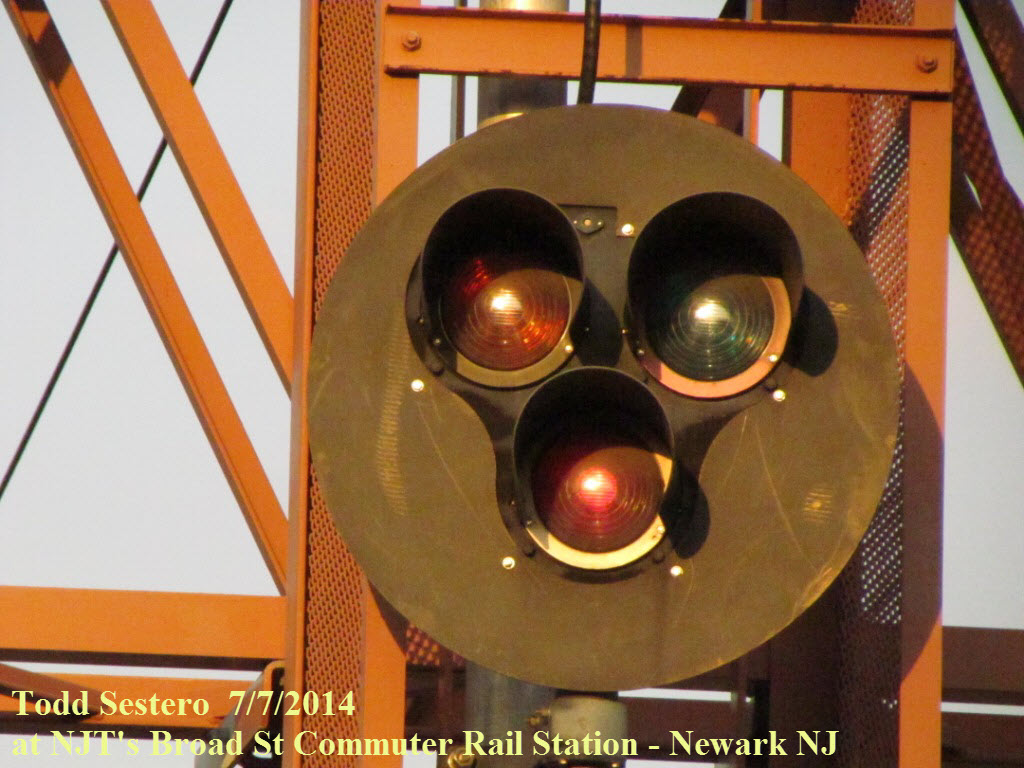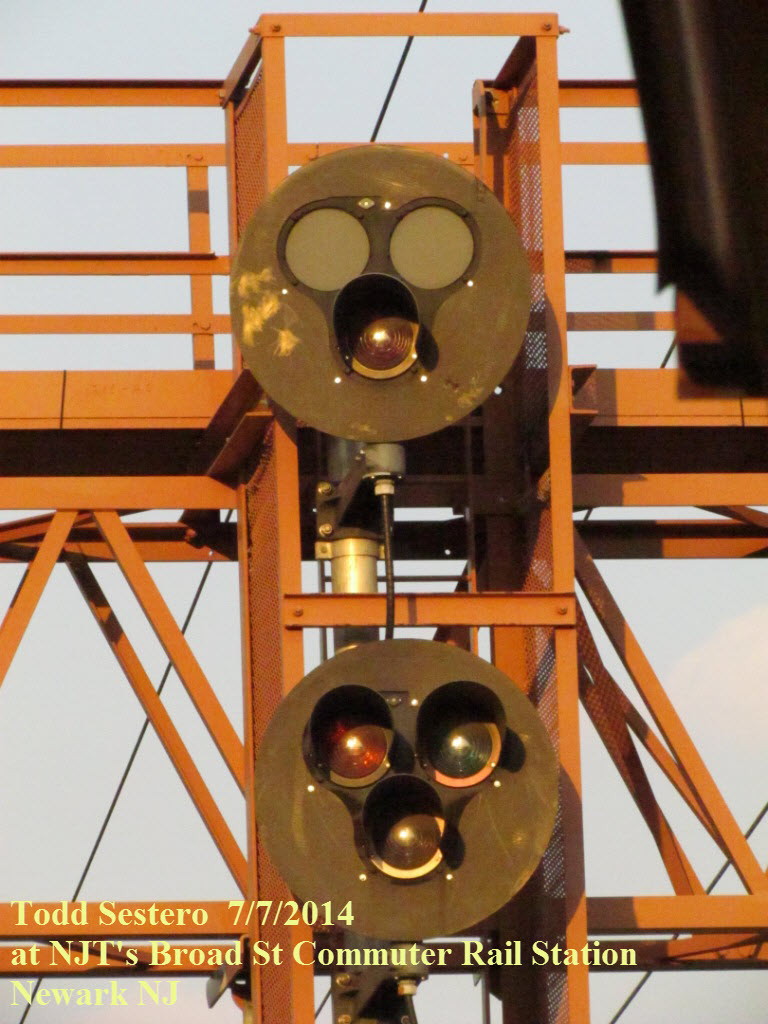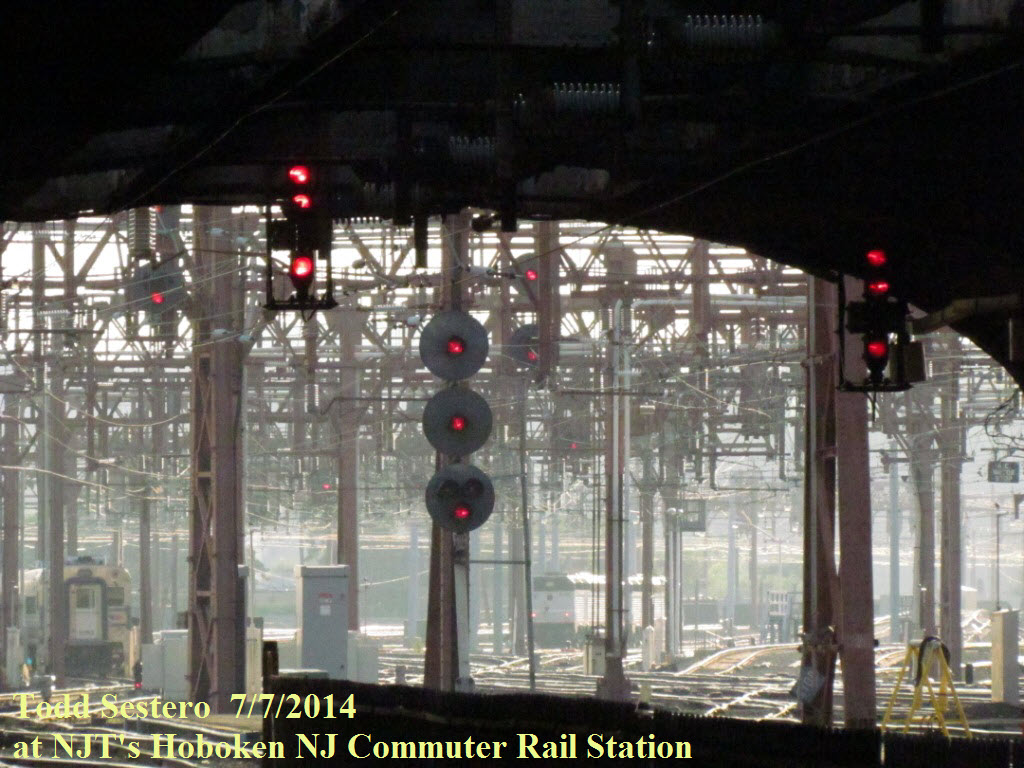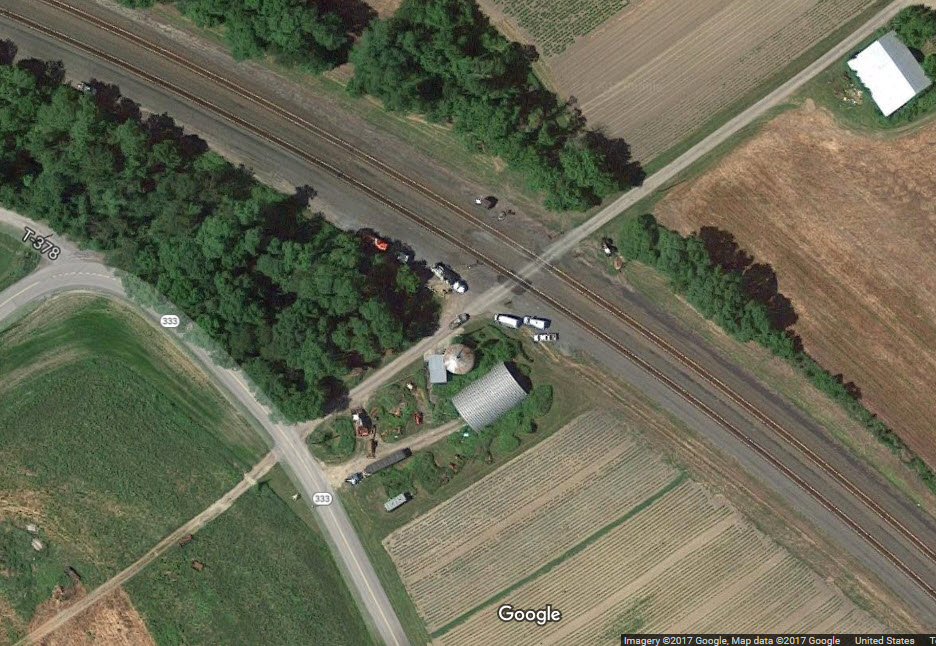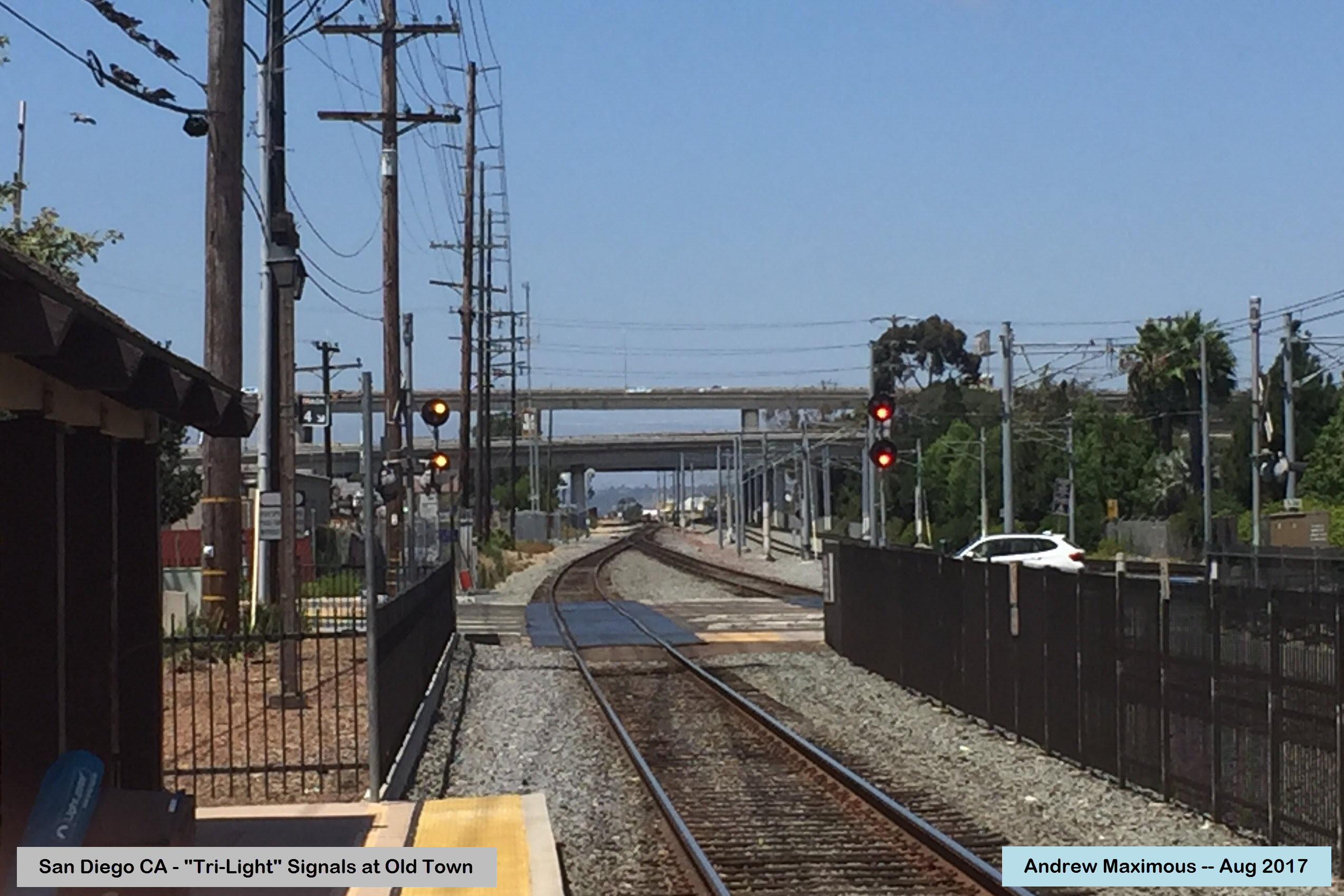This page covers a specific style of color light signals
signals nicknamed "tri-lights",
so named because of the triangular placement of the lenses. Please read my
disclaimer at the bottom of the page for an editorial on the use of the term
"tri-light".
Like other "types" of signals such as semaphores, searchlights, Pennsy
Position Lights (PL's), and B&O Color Position Lights (CPL's), this signal
style is being phased out in many locations in favor of the standard Color Light Signal.
Berea, a suburb of Cleveland OH,
is one of many locations where this has recently happened.
GRS (now Alstom), US&S, and Safetran all make this style of signal.
The picture at the top of the page is from
Havre de Grace MD, on Amtrak's Northeast Corridor, SB as you come off the Susquehanna River bridge,
notice the signal uses LED's! More on that page.
As you can see, "tri-light" signals can display a maximum of three colors,
usually red, yellow, and green, with green on the upper right side, and red at the
bottom. I guess in theory they could have any color lens in them, or reverse
the green and yellow positions. If anyone has pictures of anything other than
a typical R/Y/G arrangement, maybe you could shoot me a picture or two?
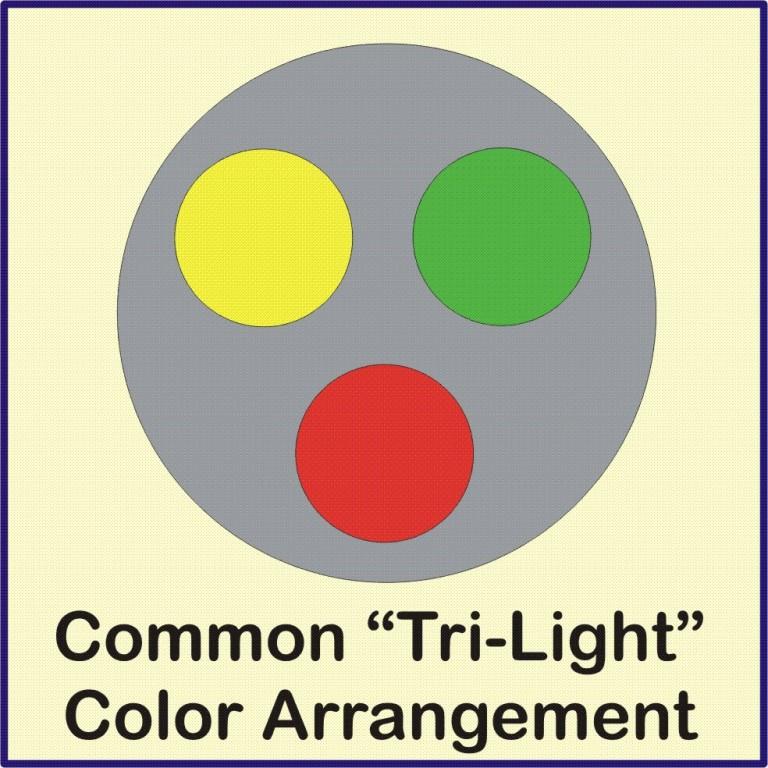
When using only one or two aspects, the railroads had two different ways of handling
the situation. One, they could just use the same 3-position head and blank out
the unused position. Or, they could use a two or single aspect housing.
An example of all three of the latter on one signal installation is from Berea OH
(left below). When using a full head and they blank out the unused positions,
they usually keep the positions filled with the normal lens color.
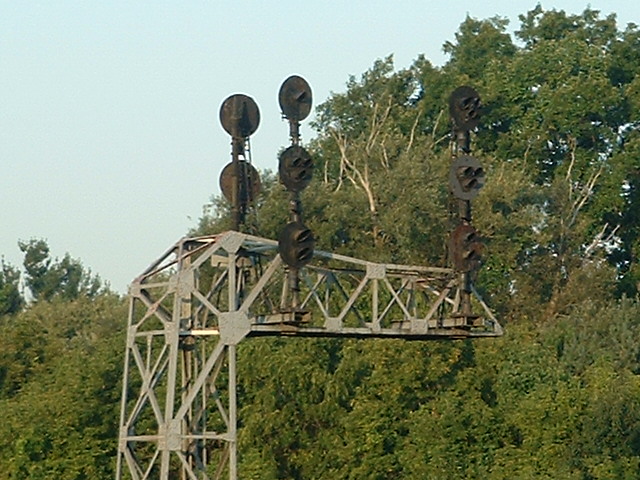
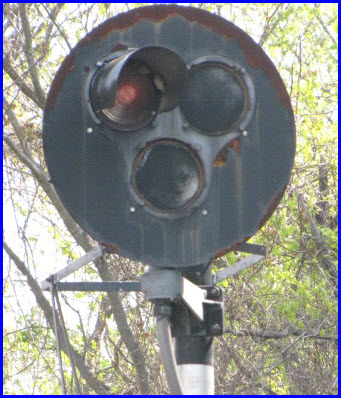

TECHNICAL
Alstom/GRS
Safetran
US&S
Alstom/GRS
Below is a screen capture from one of Alstom's PDF brochures:
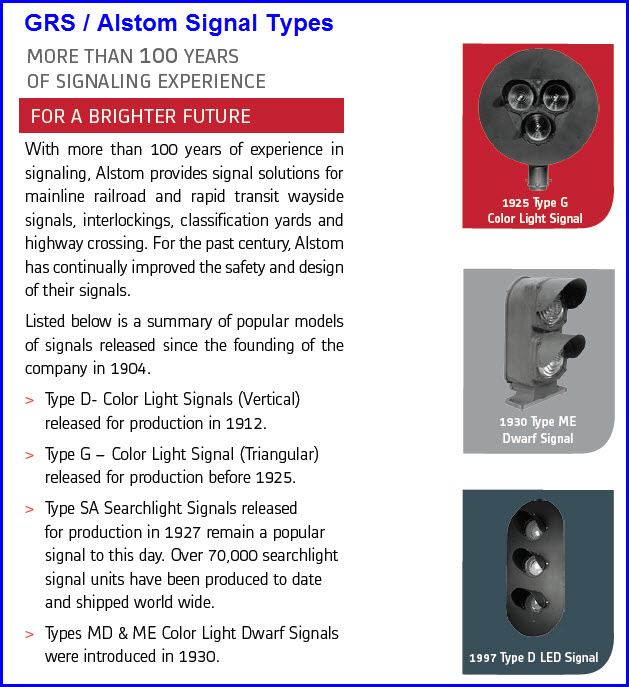
Safetran





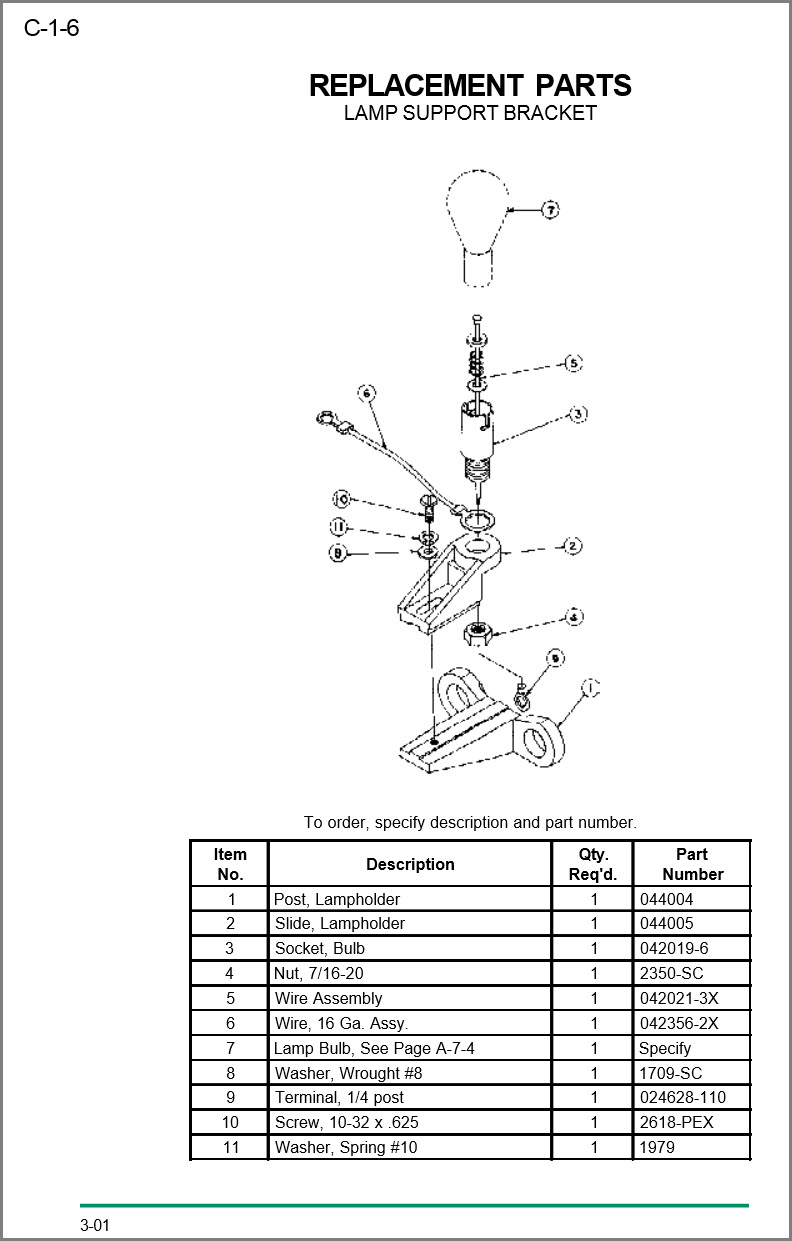

US&S
US&S Type TR-2 Triangular Signal without Background
US&S Type TP-5 Triangular Signal without Background
US&S Type TP-5 and TR-2 Triangular Signal with Background
US&S Type TR-2 Triangular Signal without Background
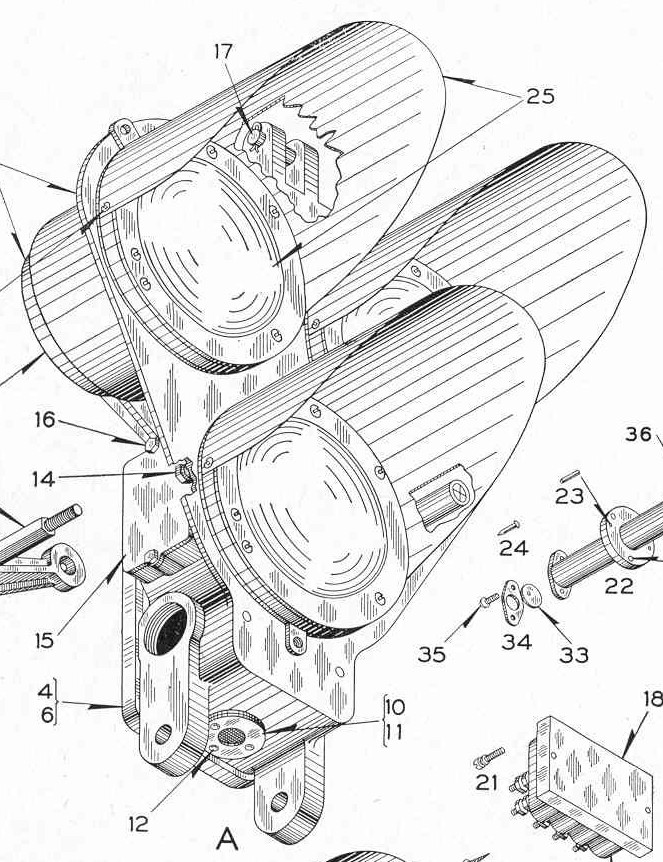
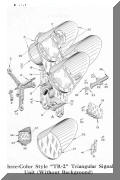
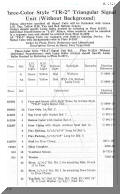
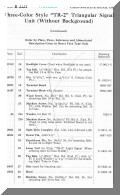
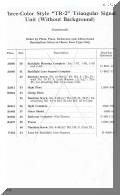
These pages are from a 1949 US&S catalog, section B for Signals.
US&S Type TP-5 Triangular Signal without Background
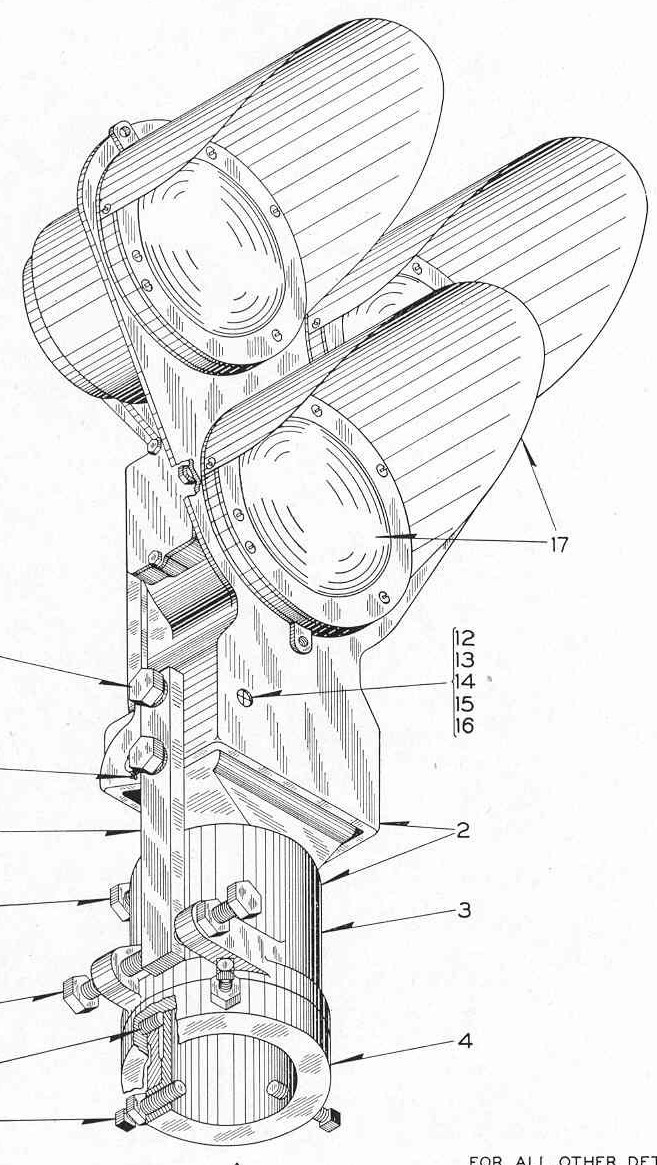
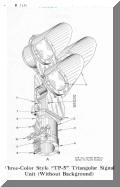

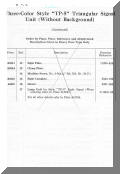
US&S Type TP-5 and TR-2 Triangular Signal with Background

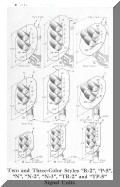

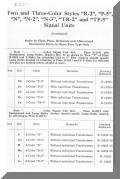


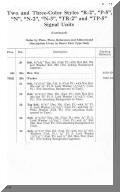
LOCATIONS WITH TRI-LIGHTS
Havre de Grace MD
Lancaster NY
Lansing MI - Trowbridge Diamond
Berea OH
Harrisburg PA
Houston TX - Pierce Junction
Woodside LI NYC
Newark NJ
Hoboken NJ
Huntingdon PA
Port Royal PA
San Diego CA
Amtrak LED Tri-lights -
Havre de Grace MD
This was the first location I had seen using LED lamps, probably around 2002 or so
(Pierce Junction in Houston was the second location in 2006). I got my first
glimpse of them while riding a MARC commuter train up to Perryville and back.
It is located on Amtrak's North East Corridor, just south of the Susquehanna River
bridge and Perryville MD, and controls interlocking for the 4-to-2 squeeze to go
over the bridge.


SB signals where it goes from 2 tracks to 4.


 NB signals where it goes from 4 to 2 tracks for the trip over the Susquehanna.
NB signals where it goes from 4 to 2 tracks for the trip over the Susquehanna.
A US&S Tri-Light in Lancaster NY on the NS / CP
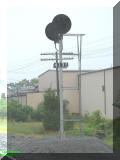


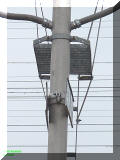
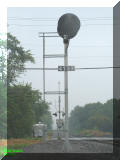









PS - Yes, it was raining
Trowbridge Diamond -Lansing MI



Berea - OH
Berea
used to be almost all "tri-lights", but around 2012, the NS replaced
them with standard "darth vader" style colorlight signals.











































